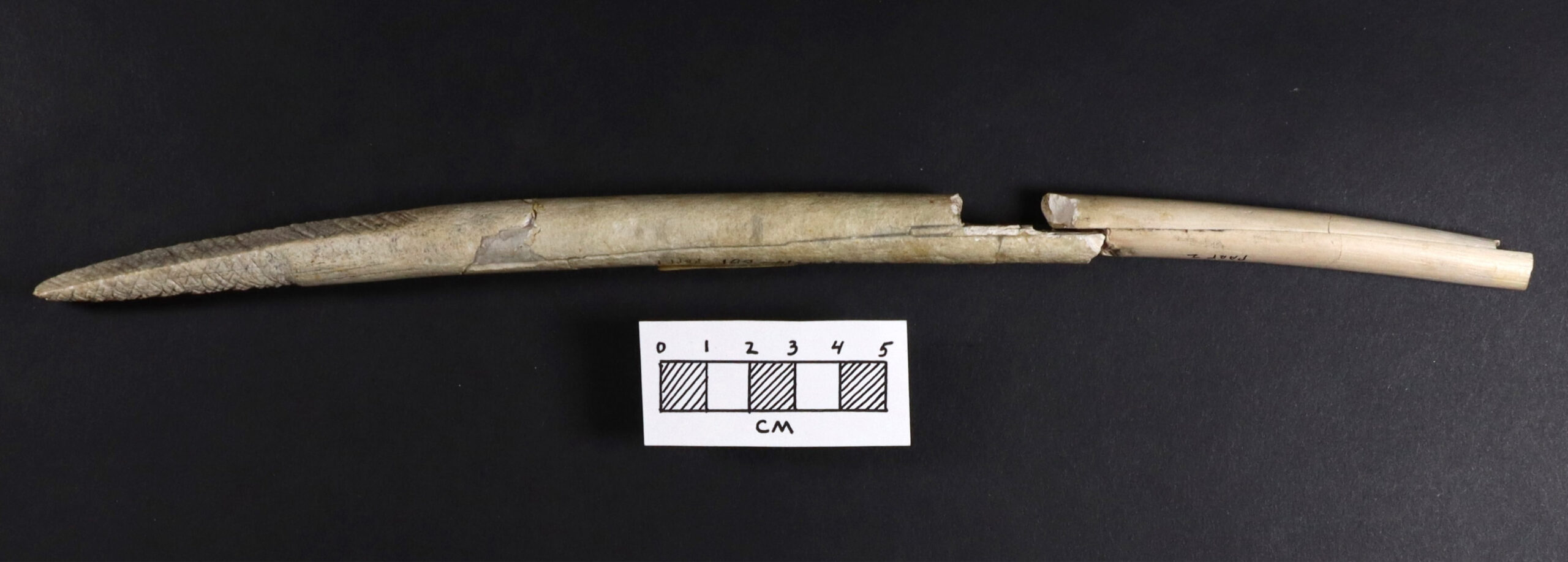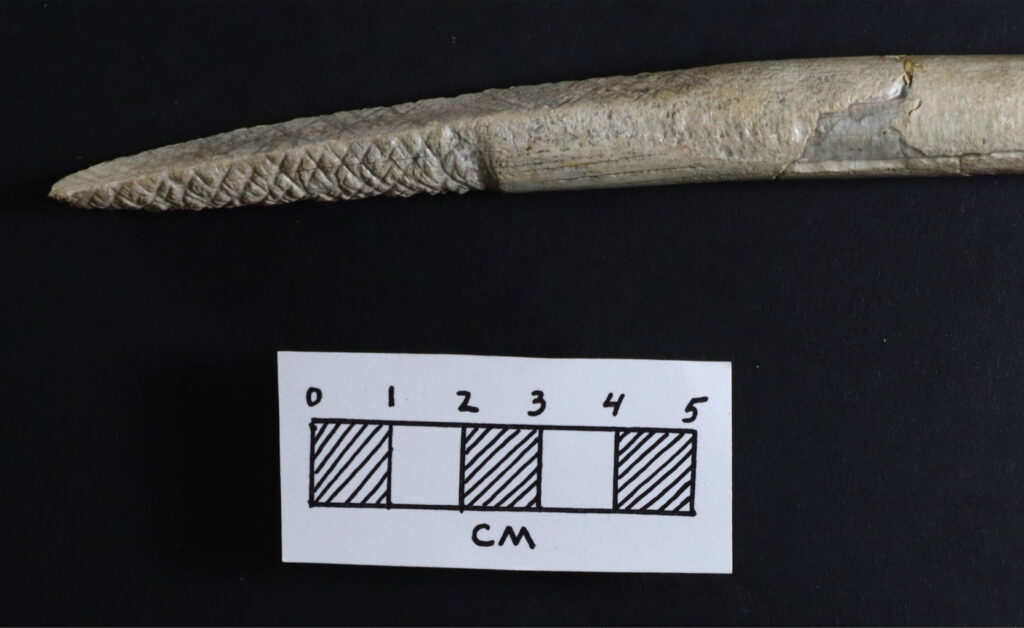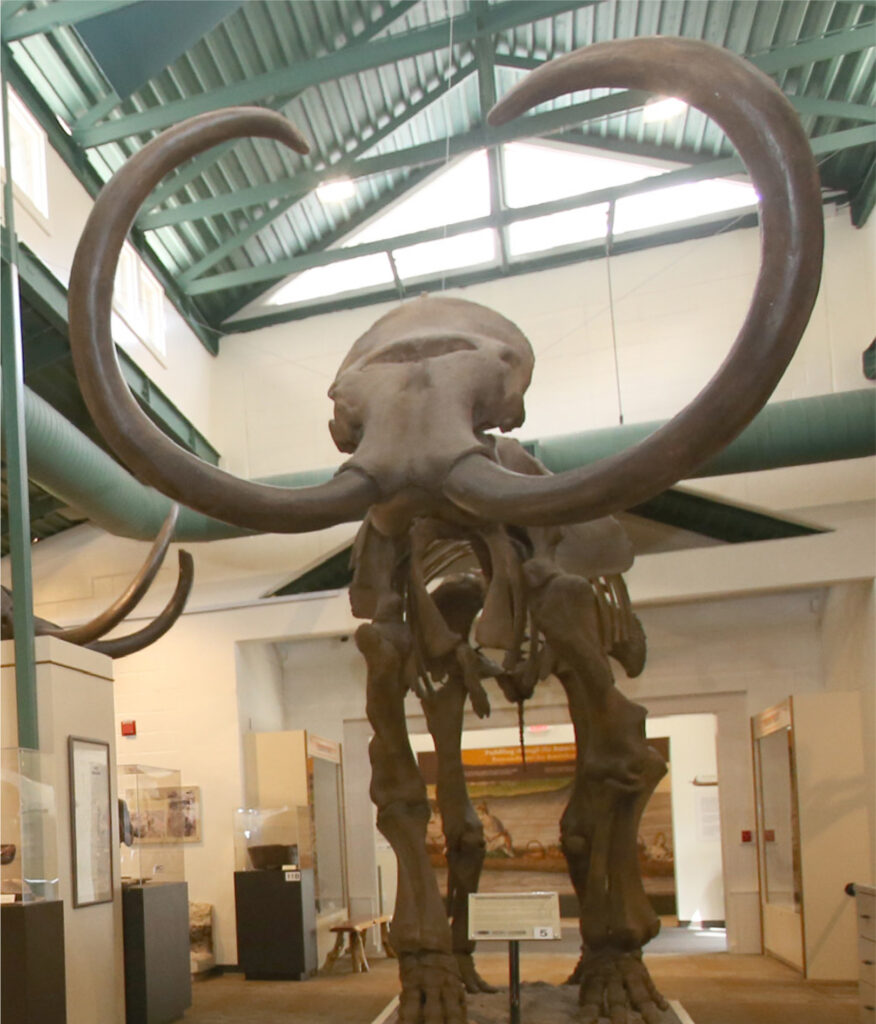A spear point made from mammoth ivory is one of the rarest objects in the Silver River Museum collections and is by far among the oldest human-made objects ever found in Marion County.

Paddling along the Silver River is a wonderous experience. The river’s flow carries one over submerged fields of green ribbon-like grass and past lush cypress forests along the banks. The water and adjacent wetlands are home to manatees, alligators, otters and a multitude of turtles, snakes, birds and fish. It is truly an amazing place and one of the gems of Marion County.
However, during the last ice age, which lasted from about 2 million to 10,000 years ago, Florida was much drier and cooler. Vast quantities of water were frozen in ice caps and sea levels were drastically lower than today, so much so that the Silver River would not have existed as it does today. During this time, the area was dry, with a series of springs and small wetlands. The animals were different as well, and at that time included now extinct species like the camelop (a type of ancient camel), giant ground sloth and Columbian mammoth.
Columbian mammoths were huge animals related to modern elephants. Fossils indicate they were at least the size of a large African elephant. They likely traveled in herds and would have eaten hundreds of pounds of vegetation each day due to their large body size. They also had massive sweeping curved ivory tusks, which are essentially specialized teeth.
It was during this time that the earliest Native Americans began to move into what is now Florida. Evidence from archaeological sites indicate people were living here and hunting animals like the mammoth by at least 14,000 years ago and probably much earlier. These earliest Floridians likely traveled in small nomadic bands and lived a hunter/gatherer lifestyle. They left scant evidence of their existence behind. Stone tools and few implements made from bone and ivory are usually all that remain.
The bow and arrow had not been developed at this time and the spear or dart was the weapon of choice. Spear points, knives and scrapers were made from chert (a flint-like local stone). These tools would have been attached to shafts or handles and used to hunt game, carve wood and bone, and work hides into leather.

Of these tools, carved ivory and bone implements are the rarest (mostly because these materials just don’t last when buried for thousands of years). However, ivory from the tusks of mammoths is extremely dense and, under the right conditions, can survive a very long time. When ancient carved ivory is found in Florida, it typically comes from a river. The Silver River is one such place.
Sometime in the early 1970s, local diver Joe Kutis recovered what he thought was carved bone from the Silver River. The item, which looked like a very large chop stick, was in two pieces and the tip part of one end was missing. Kutis had just found an extremely rare carved ivory implement. The artifact was later traded to another collector and ended up in North Carolina. Several years ago, the ivory was traded again and returned to Florida, where the Silver River Museum & Environmental Education Center was able to acquire it for exhibit. While similar objects have been found in the Santa Fe, Ichetucknee and Aucilla rivers, this is the only known specimen from
Marion County.
Ivory is essentially tooth material with no pores or marrow cavity. It is much denser and harder than bone. Tusks also grow much like trees and the growth rings create an interlocking pattern that makes ivory extremely tough. The tool Kutis found is rod-like in shape, with a beveled and roughened base that would have presumably been attached to a spear shaft. While the tip is missing, we know from other complete examples that it was likely very sharp.

Prehistoric people surely recognized that ivory remained sharp longer and broke less often than bone. When one relies on a spear for food and protection and metal has not yet been discovered, a large mammoth ivory point is a great choice. Such an artifact quickly transports the viewer to a completely different time. People shared the land with large predators and were by no means at the top of the food chain.
The ancient ivory point found by Kutis is on permanent exhibit at the museum. The point is one of the rarest objects in the museum collections and is by far among the oldest human-made objects ever found in Marion County.
The sale of ivory is now illegal, as is the collecting of artifacts from submerged lands that are considered state lands. The Silver River exists within a state park and, as such, is protected. OS
Scott Mitchell is a field archaeologist, scientific illustrator and director of the Silver River Museum & Environmental Education Center at 1445 NE 58th Avenue, inside the Silver River State Park. Museum hours are 10am to 4pm Saturday and Sunday. Admission to the state park is $2 per person; free for ages 6 and younger. To learn more, go to silverrivermuseum.com.






